The best curved monitor: stunning screens that wrap around you
The best curved monitors make image or video editing a more comfortable and immersive experience
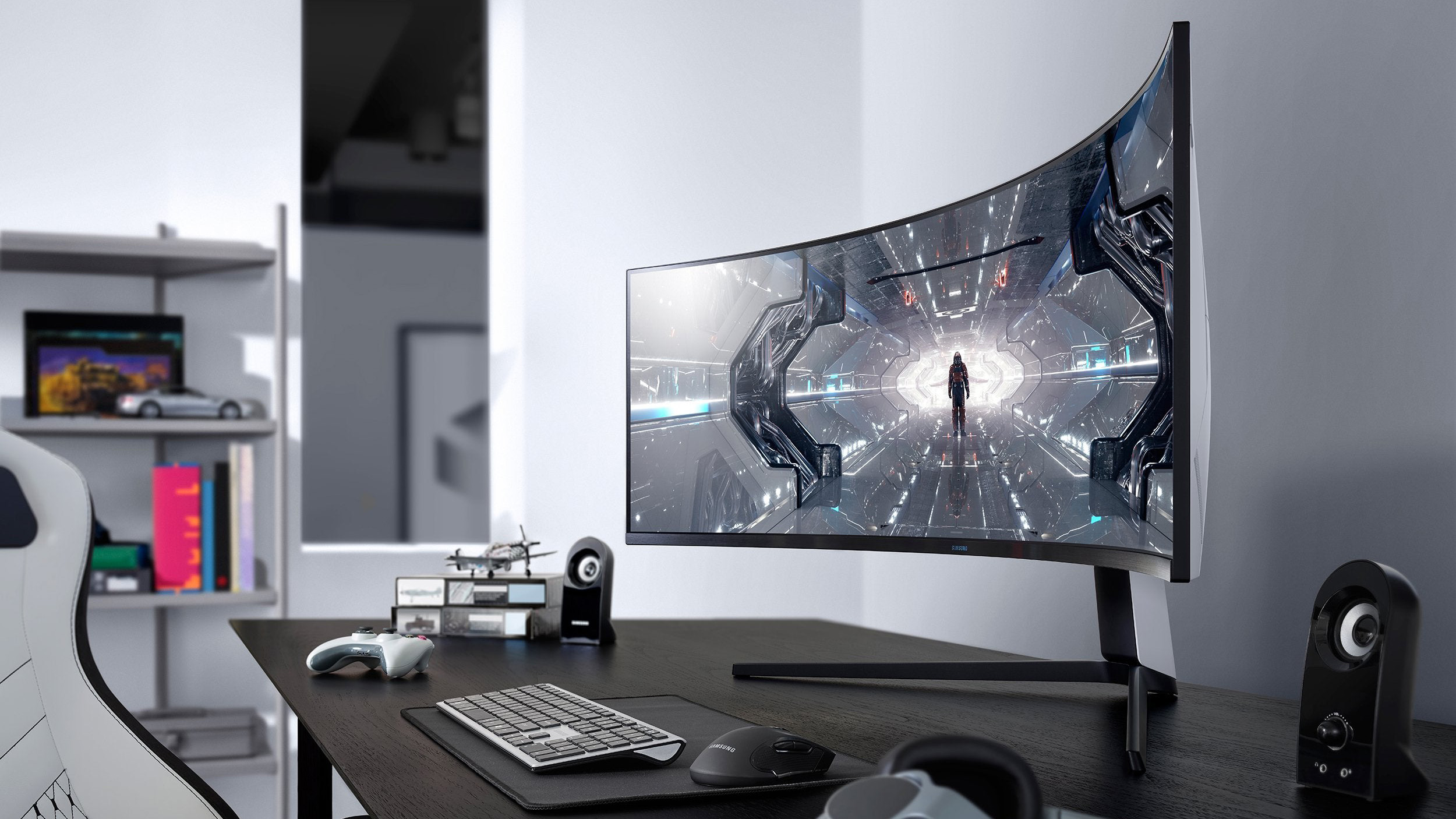
The best curved monitors make image or video editing a more comfortable and immersive experience. The curved screen wraps around your field of view, creating a more engaging and natural viewing experience that can help reduce eye strain during long editing sessions.
Curved monitors also provide a wider workspace, allowing you to view more content at once without the need for multiple displays. This can increase productivity and efficiency, especially for tasks such as photo editing, video editing, and graphic design.
The curved design is not just about aesthetics; it's about creating a more ergonomic and user-friendly experience. The curvature of the screen mimics the natural curvature of the human eye, making it easier to take in the entire display without straining your eyes or neck. Additionally, some curved monitors feature ultrawide aspect ratios, further enhancing the immersive experience and providing ample screen real estate for multitasking.
Our top picks

Best overall
This massive 39.7-inch curved ultrawide monitor offers outstanding quality thanks to its 5120 x 2160 resolution, 99% DCI-P3 color coverage and Delta E <2 color accuracy, while the 2500R curvature nicely envelops the viewer. There's excellent connectivity, too.
Read more below
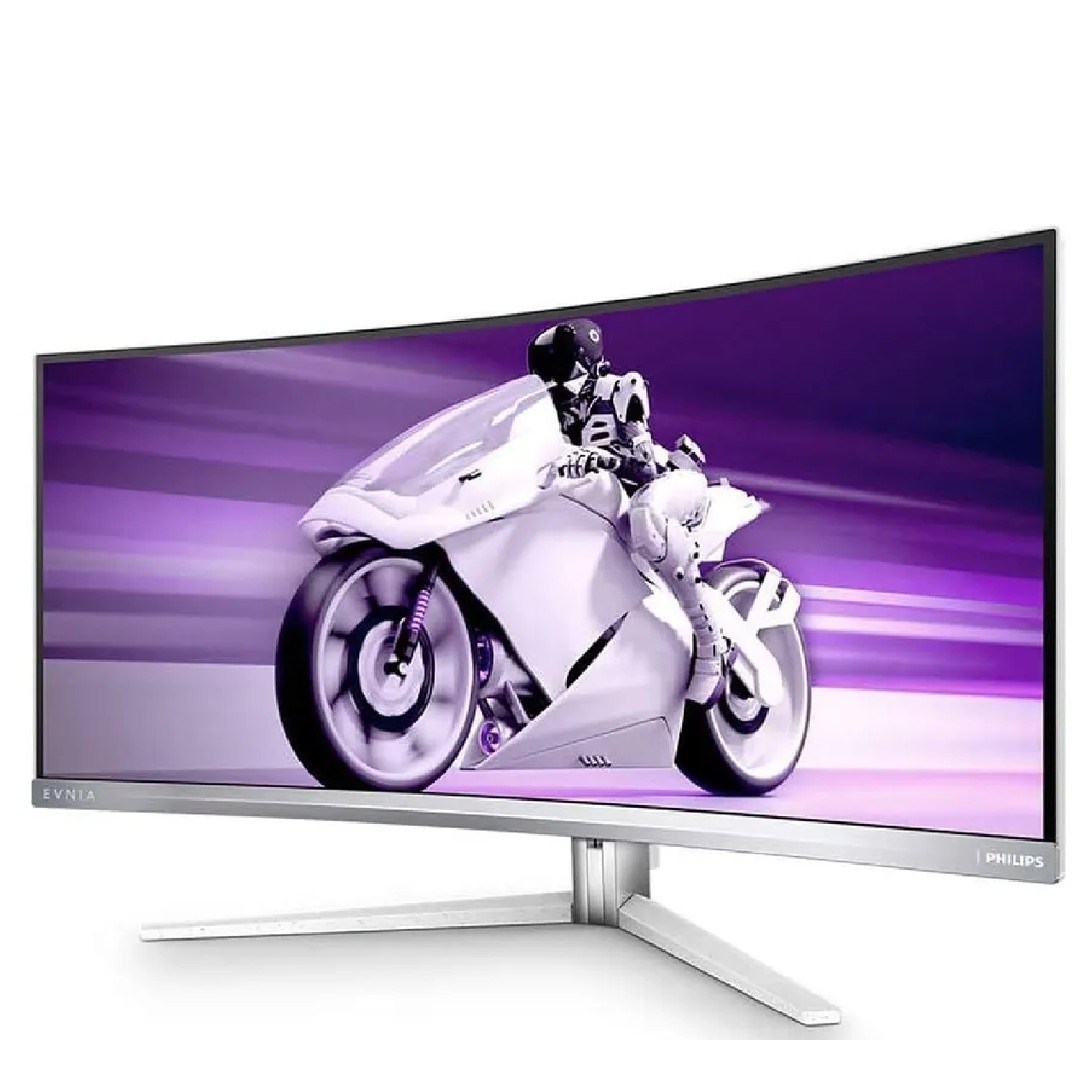
Best value
Is the first pick on our list too pricey for your budget? Then this is our top pick for overall value. Its standout qualities include a gorgeous 3440x1440 resolution OLED display with an impressive 1.07 billion colors and 1,000,000:1 contrast ratio.
Read more below
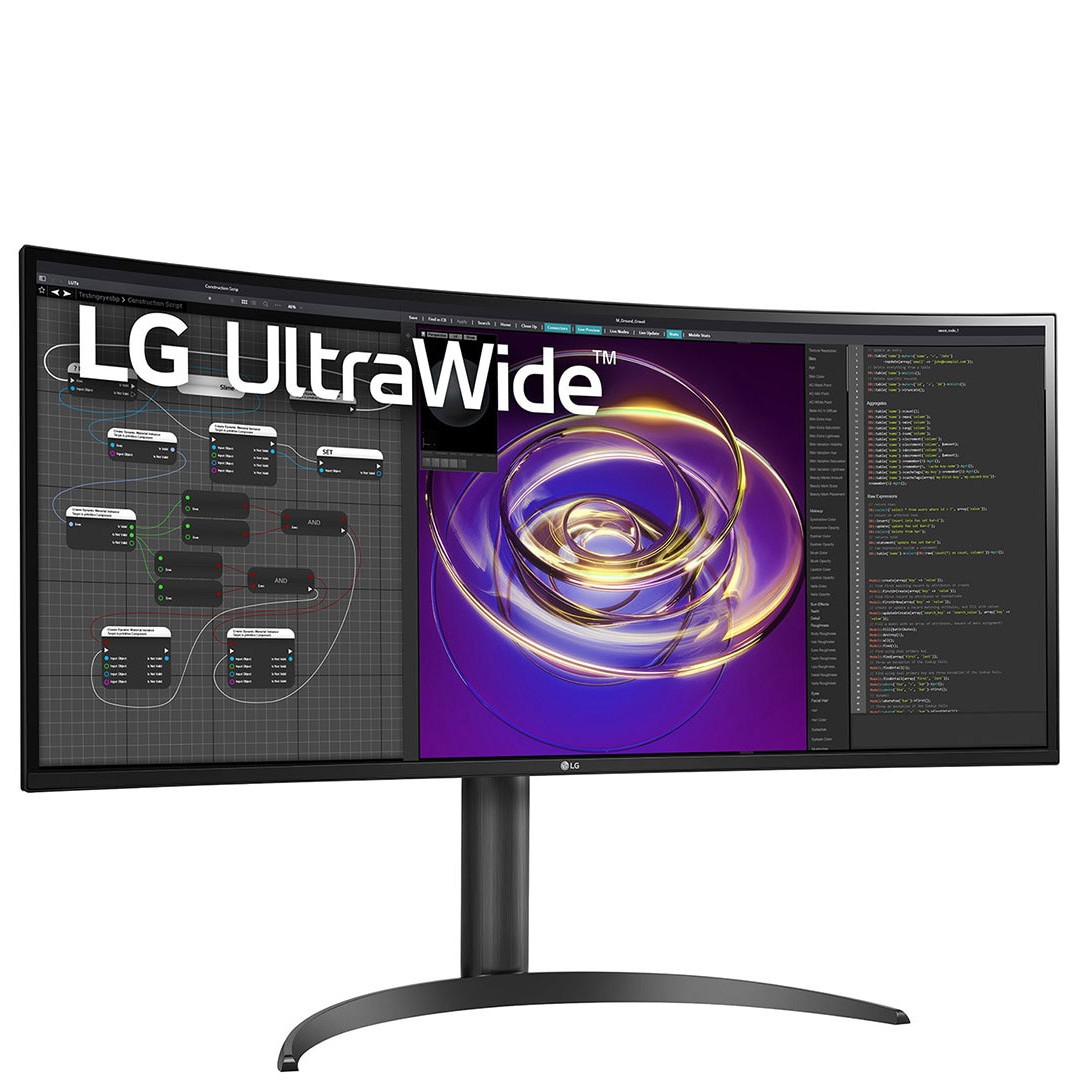
Best cheap
This monitor represents superb value. It's an IPS display, so color and contrast accuracy are more reliable than a cheaper curved monitor using a VA LCD screen. And there's also 99% sRGB color space coverage and HDR10 certification.
Read more below
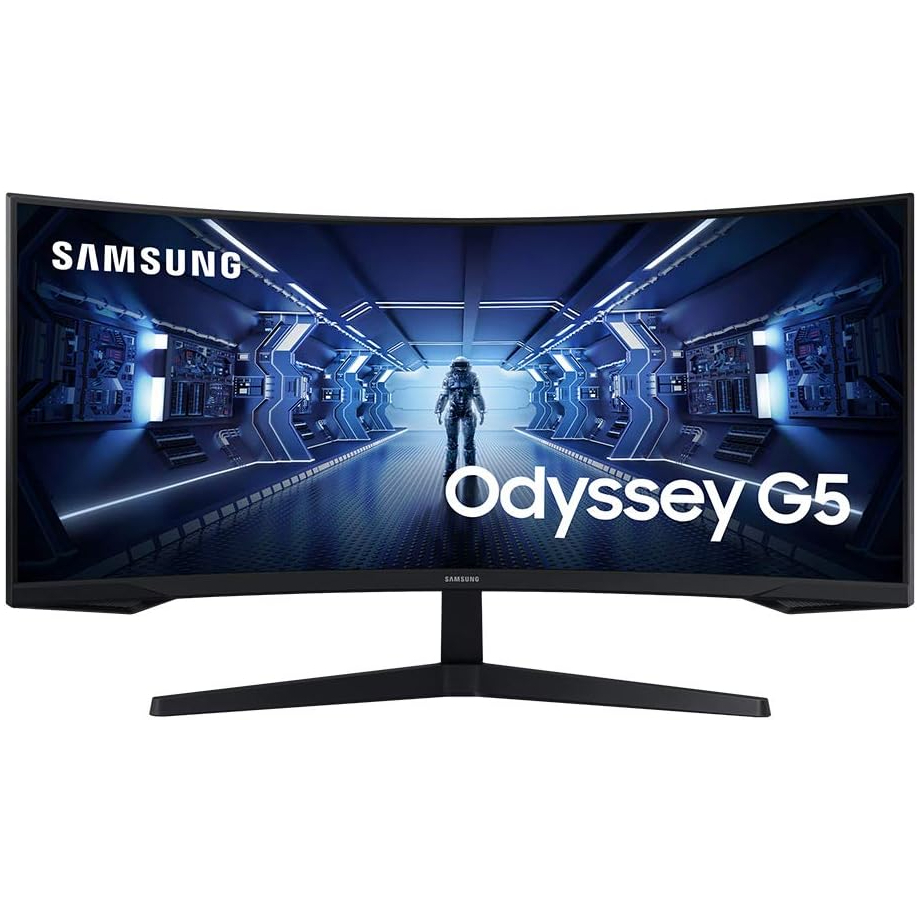
Gaming
Like gaming but short on cash? This budget-friendly 34-inch curved gaming monitor offers decent specs for its low price. Based around a 3440x1440 resolution VA panel, it offers a fast 165Hz refresh rate and 1ms response time.
Read more below
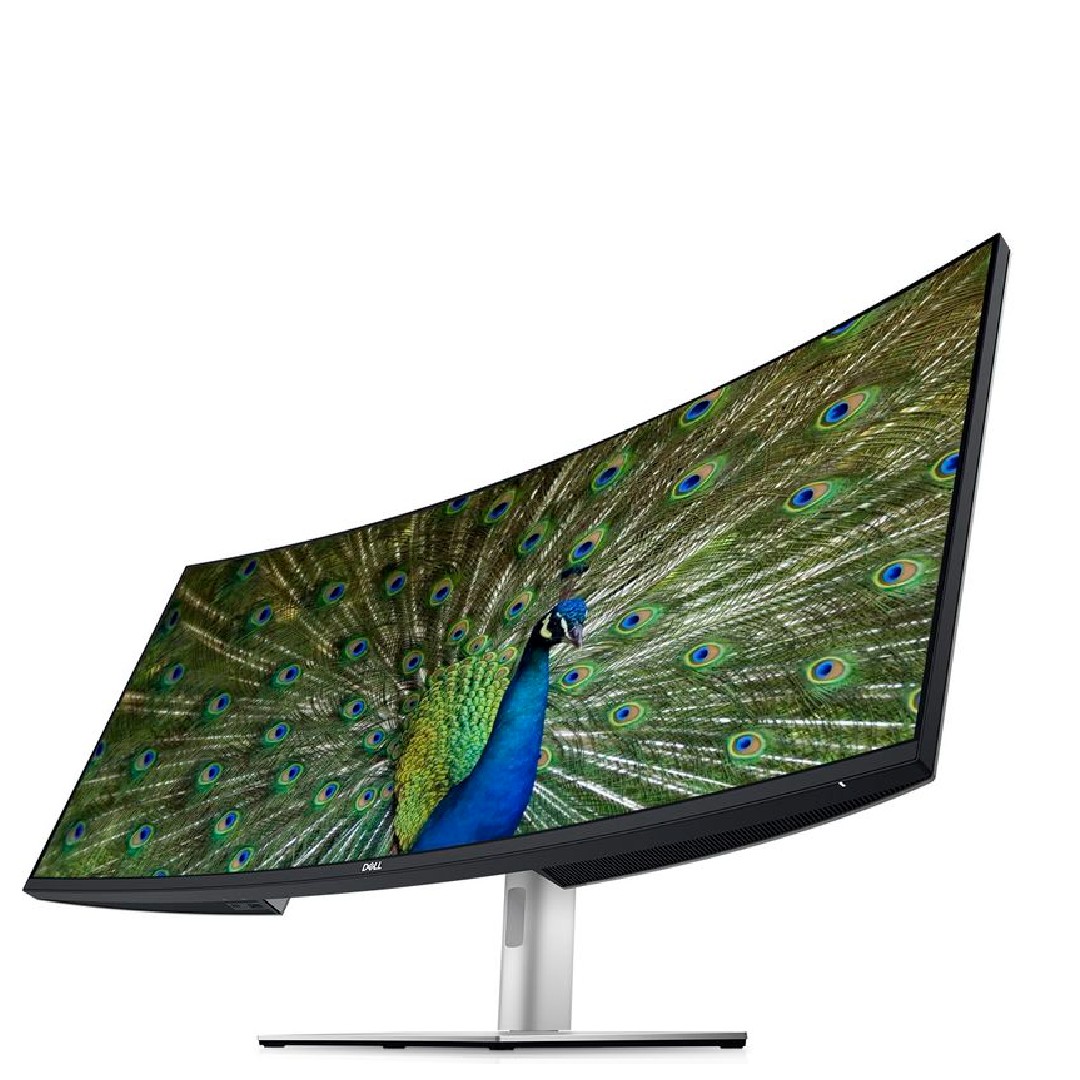
Large hi-res
Want a big curved monitor, and 4K too low-res for your needs? Here's a 40-inch 21:9 curved ultrawide display with an equally huge 5120 x 2160 resolution. And the 2500R screen curvature radius (2,500mm) means the corners are comfortably visible.
Read more below
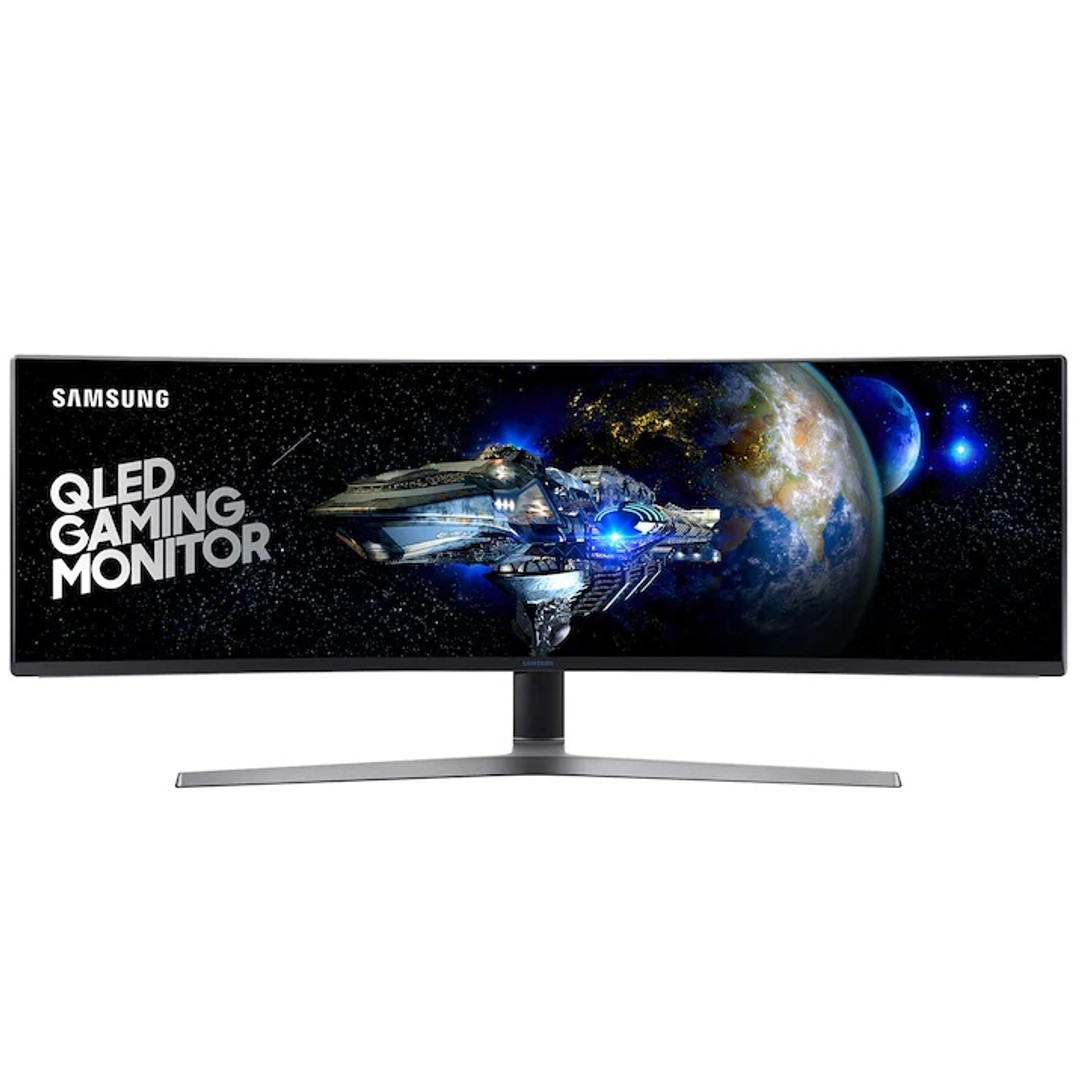
Best ultrawide
At 49.5 inches and a 32:9 ratio, this will take up your entire desk. But the amount of workspace it offers is unbeatable. It has a staggering 3,840 x 1080 resolution and HDR support, so you'll be able to work on multiple photos or videos at once.
Read more below
The best curved monitors
Why you can trust Digital Camera World
Best curved monitor overall
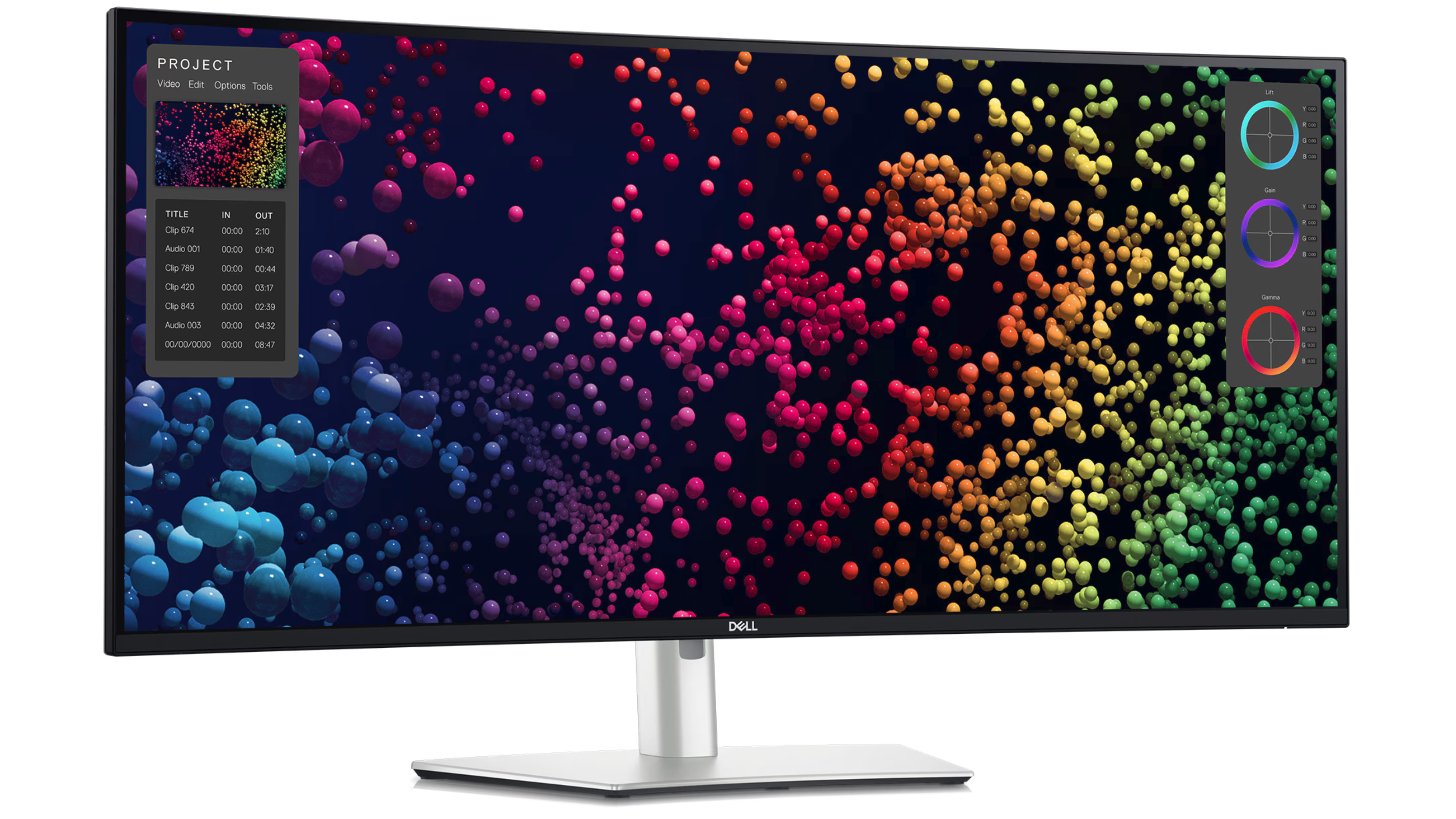
1. Dell UltraSharp U4025QW
Specifications
Reasons to buy
Reasons to avoid
The Dell UltraSharp 40 Curved Thunderbolt Hub Monitor - U4025QW (to give it its full name!) is a massive 39.7-inch curved ultrawide monitor. This provides an immense amount of workspace, making it ideal for multitasking and productivity.
Many ultrawide monitors offer a total pixel count less than a conventional 16:9 4K monitor, but not this one. Its 5120 x 2160 resolution means you're taking standard 4K (3840 x 2160) and adding extra pixels to the sides to fill the ultrawide aspect ratio - there are no compromises here. What's more, unlike some cheaper curved monitors which make do with VA-based LCD panels, the U4025QW uses a premium IPS display, ensuring top-notch color and contrast consistency, regardless of your viewing angle. 99% DCI-P3 color space coverage is spectacular, as is the Delta E <2 color accuracy.
Excellent connectivity is provided by Thunderbolt 4, DisplayPort, HDMI, and multiple USB-C/USB-A outputs. An ergonomic stand with height, tilt and swivel adjustments completes the package.
Of course, all this doesn't come cheap, but that's the price you pay to get the very best curved monitor.
Best value curved monitor
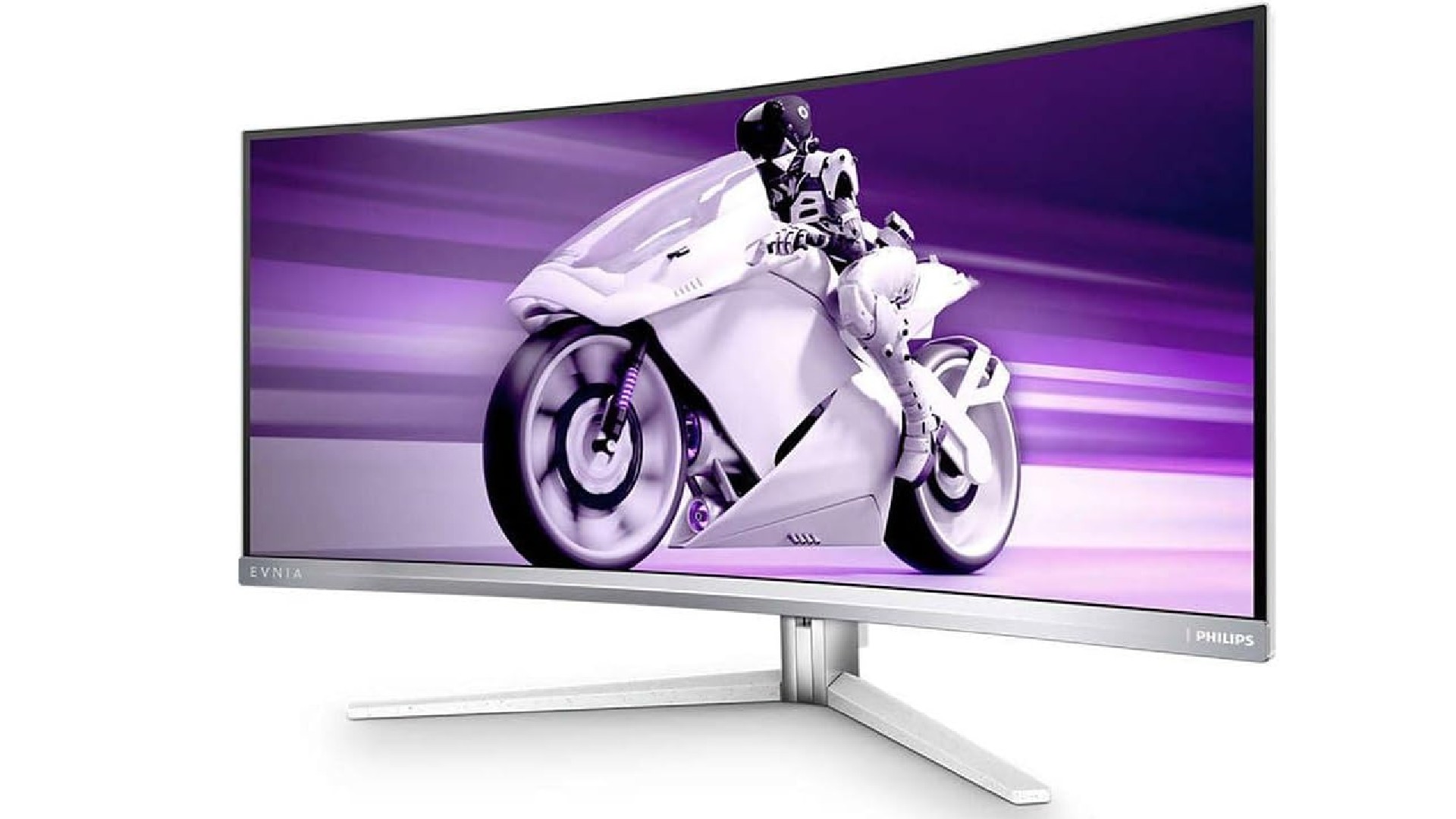
2. Philips Evnia 34M2C8600
Specifications
Reasons to buy
Reasons to avoid
Is the first pick on our list too pricey for your budget? Then this top-of-the-line 34-inch ultrawide curved gaming monitor is our top pick for overall value. Its standout qualities include a gorgeous 3440x1440 resolution OLED display with an impressive 1.07 billion colors, 1,000,000:1 contrast ratio, and coverage of 99.3% of the DCI-P3 color gamut. That makes making it fantastic for color-accurate photo and video editing, as well as gaming.
You get a silky smooth performance with a 175Hz refresh rate and fast 0.03ms response time. The gentle 1800R curvature provides an immersive experience while minimizing distortion, ideal for both gaming and creative work. And it benefits from a sleek design, with thin bezels and an adjustable stand, along with ample connectivity options including HDMI, DisplayPort, USB-C with power delivery, and a built-in USB hub.
Best cheap curved monitor
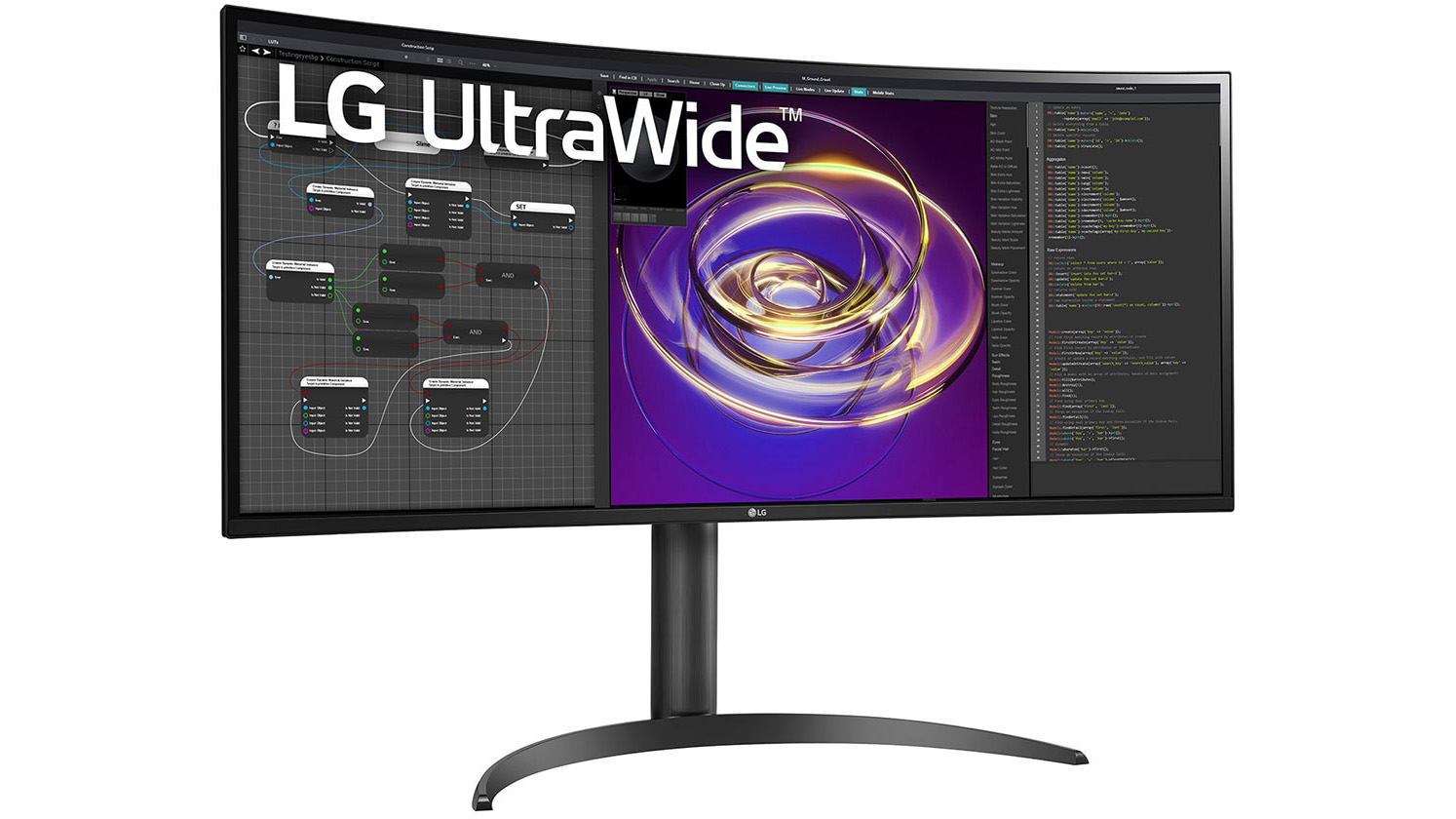
3. LG 34WP85C-B
Specifications
Reasons to buy
Reasons to avoid
It may not be the newest curved monitor on the market, but at current prices the LG 34WL75C represents superb value for money. For starters, it's an IPS display, so color and contrast accuracy are more reliable than a cheaper curved monitor using VA LCD screen technology. Not only is this critical for accurate image editing, so too is the 99% sRGB color space coverage, plus there's HDR10 certification for viewing high dynamic range content.
You don't get factory color calibration like you would with a more premium display, but a separate monitor calibrator can solve that. The 3440 x 1440 aspect ratio is to be expected for this screen size, and matches equivalently-sized curved monitors at higher price points. All things considered, a real bargain.
Best curved monitor for gaming
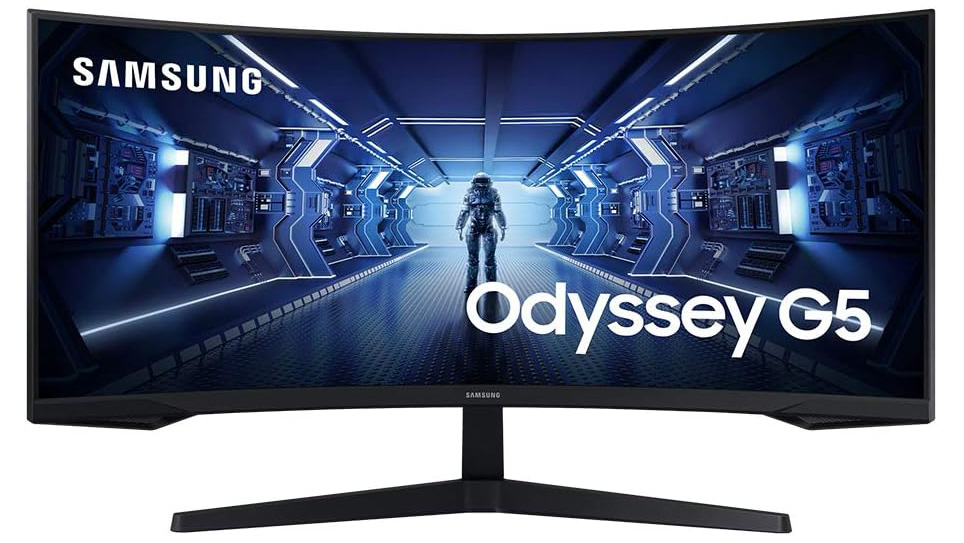
4. Samsung Odyssey G5 34" (G55T)
Specifications
Reasons to buy
Reasons to avoid
Like gaming but short on cash? The 34" Samsung Odyssey G5 is a budget-friendly 34-inch curved gaming monitor that offers decent specs for a reasonable price.
Based around a 3440 x 1440 resolution VA panel with a super-tight 1000R curvature, it offers a fast 165Hz refresh rate and 1ms response time for smooth gaming. You also get HDR, 250 nits brightness and 2,500:1 contrast ratio. Connectivity includes HDMI, DisplayPort, and USB ports.
For immersive gaming on a budget, this monitor should be ideal, but we wouldn't recommend it for color-critical image or video editing. It uses a VA-based LCD panel, so color and contrast will fluctuate depending on your viewing angle, and Odyssey G5 won't display a high percentage of wide-gamut color spaces.
Best large curved monitor for high resolution
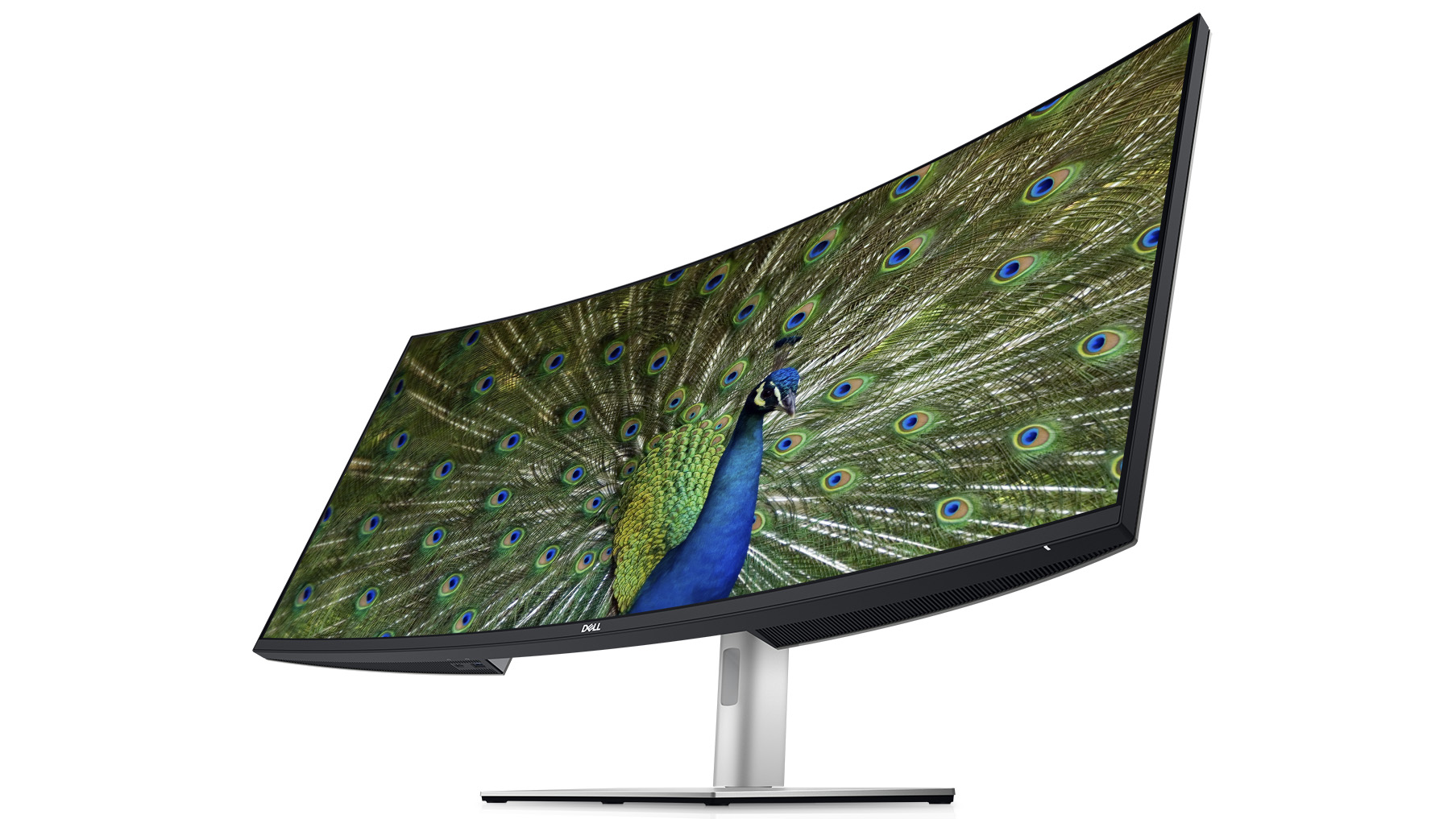
5. Dell UltraSharp 40 Curved U4021QW
Specifications
Reasons to buy
Reasons to avoid
Want a big curved monitor, and 4K too low-res for your needs? The Dell UltraSharp 40 Curved WUHD Monitor (U4021QW) is a 40-inch 21:9 curved ultrawide display with an equally huge 5120 x 2160 resolution. And the 2500R screen curvature radius (2,500mm) means that even though the U4021QW has an immense 929mm viewable screen width, the corners are still comfortably visible.
The trouble with many 21:9 ultrawide screens is resolution is often compromised compared to a conventional 16:9, 4K (3840 x 2160) screen - 3840 x 1600 and 3440 x 1440 resolutions are the norm. Not so here. The U4021QW's 5120 x 2160 (WUHD) resolution equates to a genuine 4K/UHD vertical resolution with additional pixels on the horizontal axis over and above 4K to fill the 21:9 aspect ratio.
Dell has also paid particular attention to color accuracy, as the U4021QW can display 100% sRGB, 100% Rec.709 and a very respectable 98% of the DC-P3 color space. What's more, Dell claims a Delta-E <2 color accuracy right out of the box thanks to factory color calibration.
Best ultrawide curved monitor
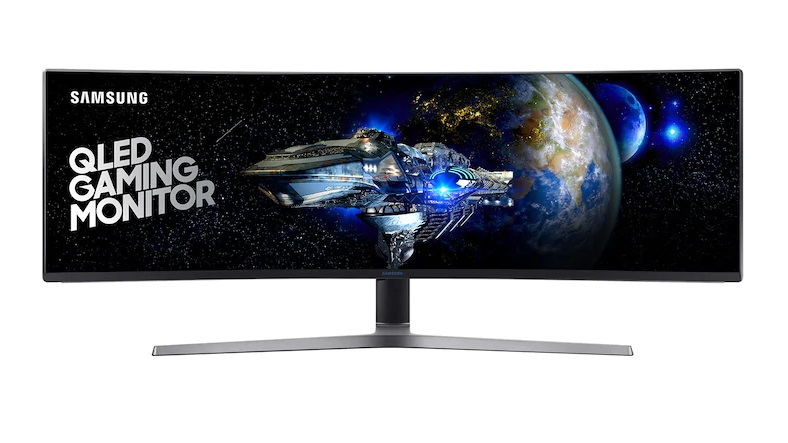
6. Samsung CHG90 QLED
Specifications
Reasons to buy
Reasons to avoid
If you're looking for the widest curved monitor on the market today, the huge Samsung CHG90 QLED is the one to get. At 49.5 inches and a 32:9 ratio, it'll take up your entire desk. But the amount of workspace it offers is unbeatable. It has a staggering 3,840 x 1080 resolution and HDR support, so you'll be able to work on multiple photos or videos at once, with jaw-dropping visual impact. This is an inevitably expensive beast of a monitor, but worth the money if you want a huge canvas to work on.
FAQs
What is a curved monitor?
A curved monitor is a computer display with a screen that curves inwards towards the viewer, unlike the flat panels of traditional monitors. This curvature is designed to mimic the natural curve of the human eye.
Should I buy a curved monitor?
Curved monitors offer a more immersive viewing experience, particularly for gaming and watching movies, as the curve engulfs your field of view. They can also reduce eye strain for some users by creating a more consistent viewing distance across the entire screen. However, curved monitors might distort text or images for productivity tasks, and they're generally more expensive than flat monitors of similar size and quality.
How big should a curved monitor be?
The ideal size for a curved monitor is generally considered to be at least 30 inches. This is because the curvature is more effective at creating an immersive viewing experience when the screen fills a larger portion of your field of view. The curvature is designed to match the natural curve of your eye, and a larger screen size fills more of your vision, creating a more realistic and engaging experience.
How to choose the best curved monitor
When deciding which curved monitor to choose, there are a number of factors to consider. The first is aspect ratio. If you're serious about getting a curved monitor, you're much better off going for a larger, ultrawide display with an aspect ratio of 21:9 or wider.
That way, the curvature radius will really delivery a noticeable benefit versus a smaller screen, or a conventional 16:9 widescreen monitor. You'll get a lot more horizontal space to work on without having to set up multiple monitors on the same desk. There are also an increasing number of monitors that have even wider aspect ratios of 32:9, which can be useful if you want to display two 16:9 videos side by side without having to resort to dual screens.
A second consideration is the curvature radius: the extent to which a curved display 'wraps around'. This will usually be advertised as '1800R' or '2300R', for example.
An 1800R curve means that the radius of the curvature is equivalent to 1800 millimetres, or 1.8 metres. So if you were to continue the curvature of the screen from the left edge of the screen, all the way around to the right, the point in the middle of the resulting circle would be 1.8 metres from the screen. Therefore, the lower the curvature rating, the tighter the curvature, and the closer you can sit to the monitor and still get an optimal viewing angle across the entire display.
It's also worth thinking about resolution. By far the most common resolution for a large curved 21:9 monitor is 3440 x 1440, which isn't far off 4K along the horizontal, but is quite a way short of the 2160 vertical resolution of 4K. In order to solve this, you'd need a rare, and very expensive, monitor with a '5K2K' screen res, equating to 5120 x 2160. Realistically then, if you must go curved and don't have bottomless pockets, screen resolution may have to be compromised.
Another potential compromise with curved monitors is the type of LCD panel technology used. Even entry-level flat monitors are now based around IPS (in-plane switching) LCD displays, as IPS screen technology delivers noticeably more accurate color and contrast, especially when viewing from slightly off-centre. However, the majority of curved monitors still use VA (vertical alignment) LCD technology, which though capable of displaying high color fidelity, color and contrast soon becomes muted if you view the screen from slightly off-centre.
This is less of an issue with a curved display, but unless you're sitting at the perfect centre point in the curvature radius, color and contrast accuracy can vary across the width of the screen, which is bad news for image or video editing. For this reason, the majority of monitors on this list are curved IPS displays. They're not as common as VA panels, but if you're serious about your image and video editing, a curved IPS monitor is well worth the price premium.
How we test monitors
Our review process focuses on assessing the core image quality aspects that matter most, such as brightness, contrast, color vibrancy, and accuracy. While our experienced reviewers rely on their trained eyes, we also employ specialized monitor calibration tools to objectively verify claims about color space coverage, brightness consistency, and factory color calibration.
In addition to image quality, we scrutinize the monitor's connectivity options through its display and data ports to ensure ample flexibility. We also thoroughly evaluate the build quality, including the range of ergonomic adjustments offered by the stand. Only after this comprehensive analysis do we determine if a monitor meets the high standards of discerning imaging and video enthusiasts.
For monitors that haven't undergone our full testing regimen, we carefully examine their specs to ensure they likely satisfy the demands of professional photo editors. Our goal is to recommend the best-specified monitors across various budget ranges.
Read more
The best monitors for photo editing
Best video editing monitors
Best ultrawide monitors
The best photo editing tools and accessories
What to look for when choosing a monitor
Best USB-C monitors for photo editing
Everything photographers need to work from home
Best webcam for home working
Get the Digital Camera World Newsletter
The best camera deals, reviews, product advice, and unmissable photography news, direct to your inbox!
Ben is the Imaging Labs manager, responsible for all the testing on Digital Camera World and across the entire photography portfolio at Future. Whether he's in the lab testing the sharpness of new lenses, the resolution of the latest image sensors, the zoom range of monster bridge cameras or even the latest camera phones, Ben is our go-to guy for technical insight. He's also the team's man-at-arms when it comes to camera bags, filters, memory cards, and all manner of camera accessories – his lab is a bit like the Batcave of photography! With years of experience trialling and testing kit, he's a human encyclopedia of benchmarks when it comes to recommending the best buys.

